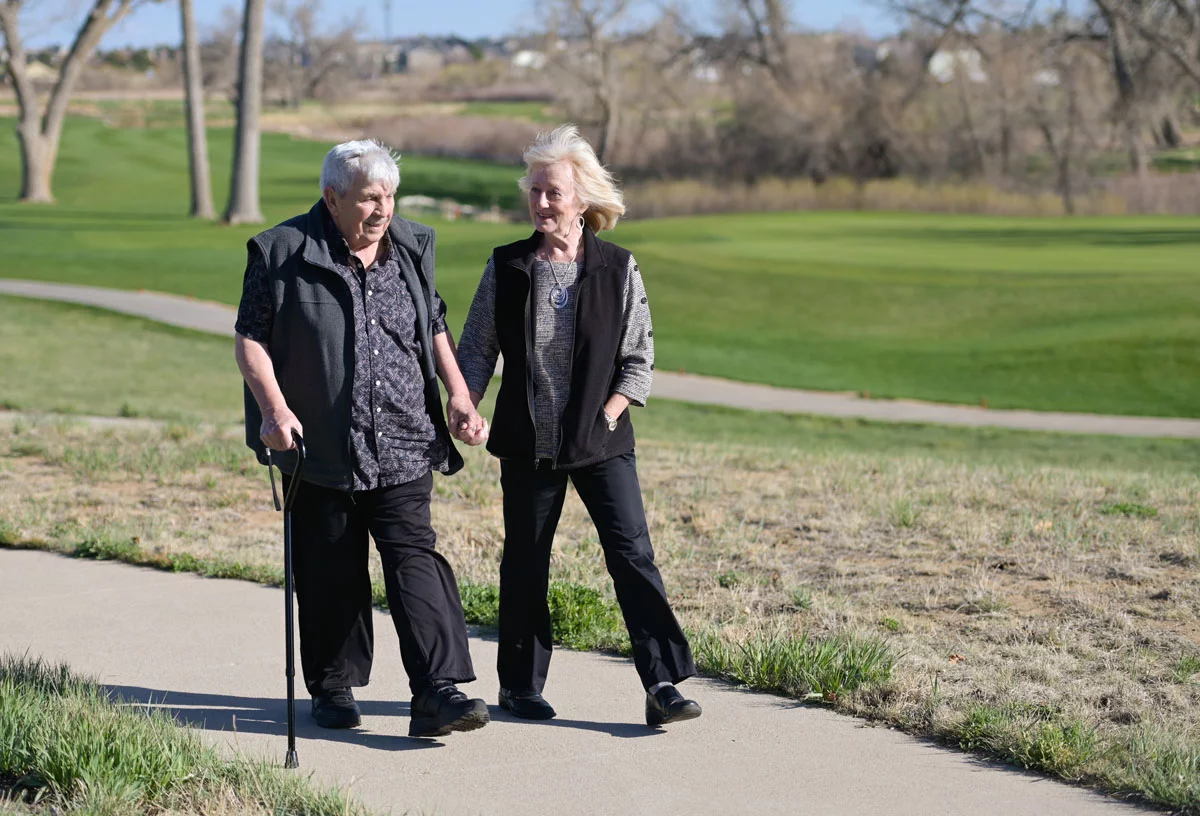
So often, the fix of the fix is a lot trickier than the original fix. That was certainly the case with Jack Sargent.
Sargent was 73 and enjoying an active retirement of golfing and spending time with wife, Debbie, when routine scans at a local hospital found an abdominal aortic aneurysm in 2016. AAAs, as they’re known, involve a ballooning of the major artery that runs down from the heart and between the kidneys before branching off at about the belly button into the iliac arteries that supply the legs. AAAs often have no symptoms until they burst, at which point you have a roughly two-in-10 chance of even surviving long enough to make it to a hospital.
The predominant AAA treatment involves inserting a wire-mesh-fortified plastic sleeve (called an endograft) into the ballooning section of aorta. It’s done using a catheter inserted into one of those iliac arteries near the groin. The procedure is called an endovascular aneurism repair, or EVAR. Blood then flows through the graft, taking pressure off the distended aorta.
Sargent had an endograft inserted, and for three years, he golfed and spent time with Debbie as before. But on July 2, 2019, while prepping a neighborhood Fourth of July picnic and parade he had made a habit of organizing, Sargent fell ill. Debbie found him collapsed on the floor of the master bathroom, delirious. Paramedics measured his blood pressure at about half of what it should have been and his fever at 105 degrees. They rushed him to UCHealth University of Colorado Hospital on the Anschutz Medical Campus.
The right place for heart care
University of Colorado School of Medicine Vascular Surgeon Dr. Max Wohlauer was on call at UCH that day. A CT scan and blood and other tests confirmed his suspicion that Sargent’s graft had become infected – a rarity that occurs perhaps once every 1,000 EVAR procedures – and that the infection had reached the bloodstream. That’s sepsis, and it’s a mortal threat.
Over the next few days, the UCHealth team’s goal was to get Sargent’s sepsis under control to the point that surgery was possible. CU School of Medicine infectious disease specialist Dr. Molly Eaton established the culprit to be Bacteroides fragilis, an anaerobic bug that’s common in the lower gastrointestinal tract.

Antibiotics helped, but the source of the infection had to go. If not, Wohlauer said, “Eventually, the aorta gets infected and ruptures, especially with something like Bacteroides, so he was at risk of dying from an aneurysm rupture or from sepsis.”
While EVAR-related infections are rare, UCH is an aortic referral center, and doctors there probably treat more of them than any other hospital in the region, Wohlauer says. Such care takes a multidisciplinary team. The one treating Sargent included the vascular surgery team, including Wohlauer, Eaton and other infectious-disease specialists, surgical intensivists, critical-care specialists, hospital medicine physicians, gastroenterologists – not to mention nurses, medical technicians, case managers, respiratory therapists, and nutritionists.
Replacing a section of aorta
On July 12, Wohlauer operated on Sargent, cleaning out the badly infected endograft and surrounding tissue and replacing a four-inch section of aorta with that of a cadaveric donor. The surgery took up a good portion of the day. When it was over, Dr. Wohlauer came out to the waiting room where Debbie, their son Aaron Sargent, and Debbie’s sister had been waiting.
“Would you like to see Jack?” he asked.
The family followed the surgeon to the ICU, where various lines and a respirator kept him alive. He was bloated, and his blood pressure was still low. Debbie was prepared to spend yet another night in the hospital, but the nurses suggested she go home and get some rest.
“One of us will be with him all night,” one told her. “Jack’s going to need you in the morning.”

Four days later, Jack moved to a step-down unit. There, over the next few days, Debbie and Aaron – an emergency medical technician – proved so adept at keeping his stapled surgical incision clean that the UCHealth team felt comfortable discharging him a few days later, on July 22. Back home, he could sit on the patio and watch the golfers on the green behind their house.
He and Debbie came back to UCH daily for several weeks. Sargent received antibiotic infusions to make sure the infection didn’t return. He was still in a wheelchair for the first couple of weeks. When came in using a walker one day, “Everybody in there started clapping and cheering,” Debbie said.
Paying it forward in thanks for their care
On the one-year anniversary of the surgery, Debbie had photos taken of her and her husband out in the backyard with the golf course in the background. They framed one and gave it to Wohlauer, who displayed it in his office.
Since Jack’s recovery, the Sargents have added volunteering at Childrens Hospital Colorado on the Anschutz Medical Campus to their slate of activities. They spend hours in the surgery waiting area each Tuesday and Thursday. It’s their way of paying forward their care at UCHealth, Sargent says.

“That hospital is incredible, and those people, they save lives every day,” he said. “It was just wonderful, and even sitting here talking about it and remembering some of the things they did – I kind of get emotional about it.”
Debbie says she was writing down the names of those she would one day like to thank – from housekeeping staff to nurses to medical residents to medical techs to physicians – until there were so many, she lost track.
“I would love to thank all these people,” she said. “The teamwork and the camaraderie and the skillsets they have – they’re all, in my mind, miracle workers.”
